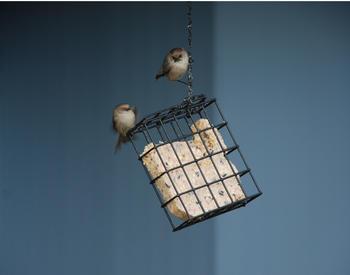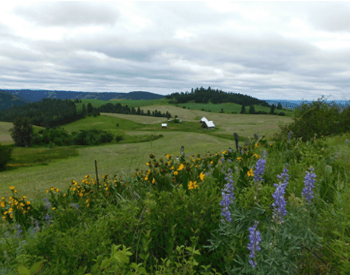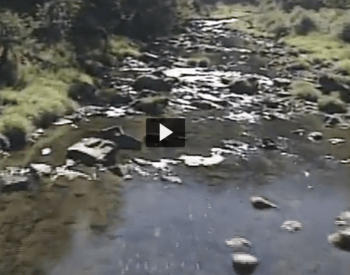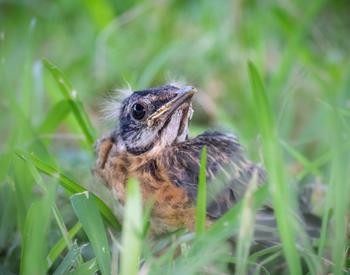A wildlife-friendly streamside garden teems with birds, butterflies, frogs and other critters. It provides a protected passageway for fish and creates a healthy home for animals that depend on the narrow edge of conditions between your garden and the stream channel. Your trees may be the nesting sites for water-loving birds such as herons and songbirds. And everyone benefits by your less-toxic and healthy streamside gardening practices — wildlife, humans and plants.
Tips for being wildlife-friendly
- Allow branches to overhang and shade the stream, making the stream more livable for aquatic organisms. Leaf litter is one type of food for stream inhabitants.
- If possible, allow large fallen branches to lodge within the stream. Leaving woody debris may lead to the formation of pools, required for some species of fish.
- Avoid growing lawn all of the way to the stream and plant native ground covers, shrubs and trees. These help prevent erosion, attract beneficial insects and provide shade.
- Limit your use of garden chemicals. Fertilizers and pesticides can easily run off your garden and into the stream, harming the stream by creating high levels of nutrients and chemicals. Try using organic and slow-release fertilizers that last longer and don’t wash off as easily, and consider managing insect pests with the least toxic alternatives.
Some suggested plants
- Bitter cherry (Prunus virginiana) and Pacific crabapple (Malus fusca): These two trees are nesting sites, shade the river and both have fruits eaten by robins, thrushes, waxwings, flickers and other birds; they are also host plants for butterfly caterpillars including the western tiger swallowtail.
- Deer fern (Blechnum spicant): An evergreen fern that provides winter protection for birds and other ground-dwelling animals. Look for the two different kinds of fronds — the tall fronds from the center of the plant produce spores and dry out by autumn; the other fronds remain evergreen yet don't produce spores. Deer fern do well in dark shade.
- Mock-orange (Philadelphus lewisii): The flowers are a nectar source for butterflies, bumblebees and honeybees, and the seeds are eaten by birds. Deer will browse the twigs.
- Redosier dogwood (Cornus sericea): The fruits of this shrub contain protein, fat and carbohydrate and are an important food source for birds and mammals. Buds and winter twigs are also a favored winter food source for a variety of animals. So plant a few extra, just in case. It is the host plant for spring azure and other butterfly larvae and provides nectar for orange and other adult butterflies.
- Snowberry (Sumphoricarpos albus): Although the fruit is not highly desired by wildlife, toward the end of the winter, it does become a valuable food for wildlife. When it becomes a thicket, the cover it provides is used by a variety of animals while the flowers are visited by hummingbirds and adult butterflies for nectar.
- Woods strawberry (Fragaria vesca): Fruit is eaten by many different animals, flowers are visited by butterflies and bees, it is a host plant for painted lady and hairstreak butterfly larvae.
- Oregon wood-sorrel (Oxalis oregana): The dense root and stem system creates habitat for small mammals and insects. The flowers are most likely bee-pollinated. The fruits, a capsule, may be eaten by insects such as ants.
- Cow parsnip (Heracleum lanatum): The larvae of several butterfly species use cow parsnip as their food plant. Adult butterflies sip nectar of the flat-topped flowers.
- Skunk cabbage (Lysichiton americanus): One of the few plants that can generate its own heat, skunk cabbage blooms early in the season and therefore creates a warm place for insects. Some, such as rove beetles, use the flowers as a mating site.
- Stream violet (Viola glabella): Documented or suspected host plant for several species of fritillary butterfly larvae and also provides nectar for adults.
- Sword fern (Polystichum munitum): Provides winter protection for birds and other ground-dwelling animals. Deer and elk browse the leaves.



















